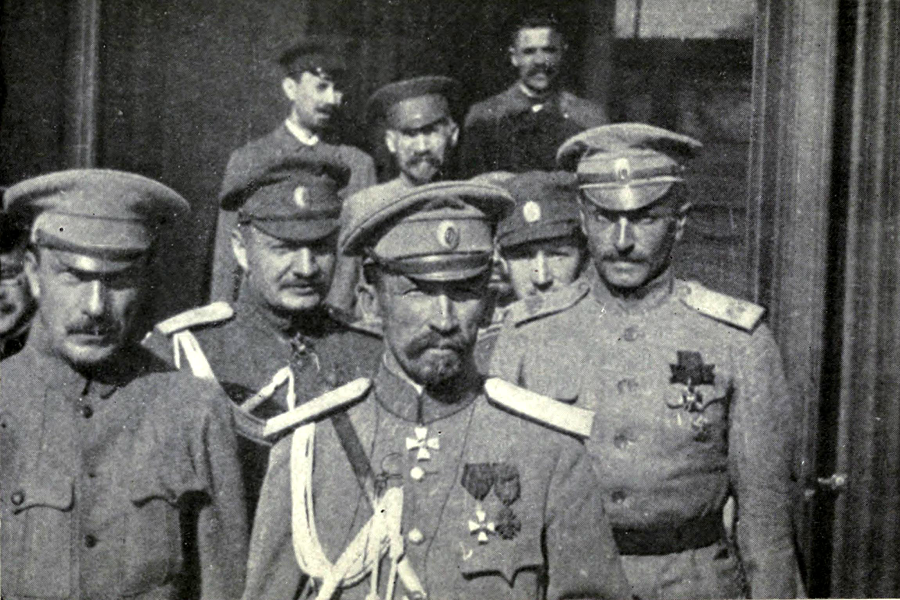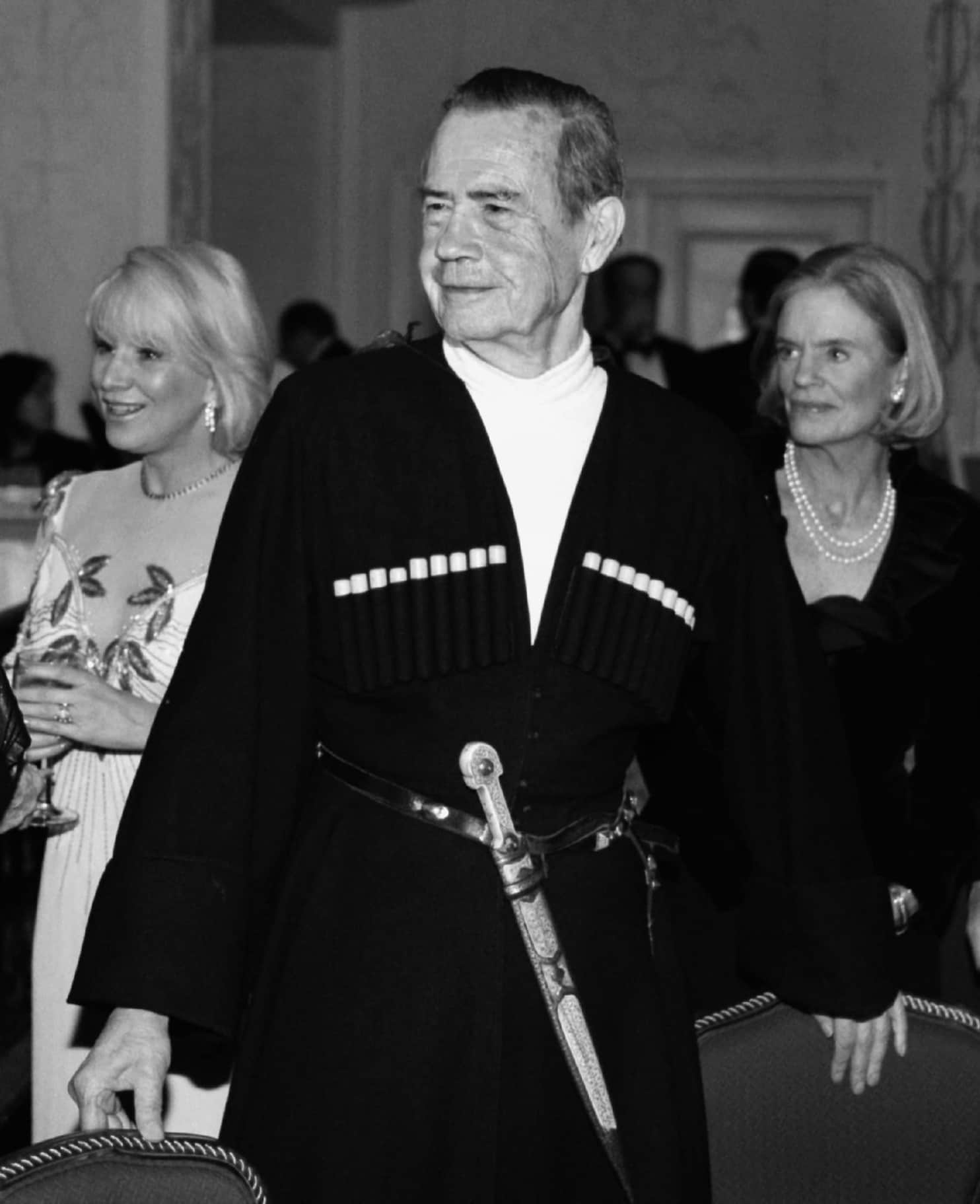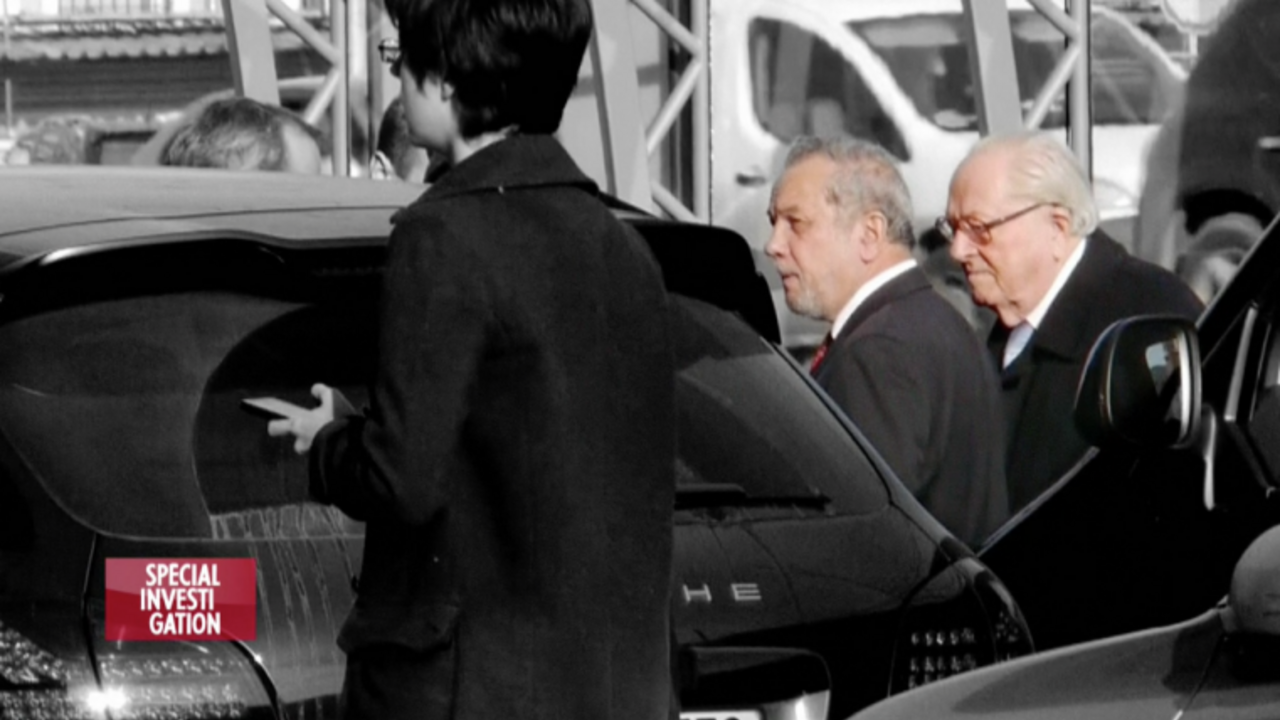
INTRODUCTION
The History of White Russian Emigration:
A Collective Biography of the Anticommunist Struggle
A Collective Biography of the Anticommunist Struggle


Lavr Kornilov, a leader of the White struggle against the Bolsheviks in Russia
Source
Source
Introduction
What links White Russian émigrés, Nazi Germany, Western intelligence agencies, Prussian aristocratic families, and some clerics of the Russian Orthodox Church? This collective international research project hopes to answer that seemingly eccentric question by rebuilding the history of a key moment of twentieth-century history: the fight against the Soviet Union.
The ramifications of our research question cross countries and continents, stretching from Russia to Europe, from there to the United States and Canada, and even as far as Latin America and Asia. They also transcend conventional chronologies: to capture the structural transformations of the various societies implicated and the political forces that animate them, we have to go back in time as far as European monarchies' struggles with imperial Russia and forward as far as the current geopolitical tensions between Western institutions and Putin's Russia. The actors may be different and the narratives may have evolved, but throughout the period can be found understudied figures who played key roles in adapting their anticommunist credo to the political Zeitgeist and collective fates that have shaped family biographies over several generations.
During the Russian civil war of 1918-1922, the White army asked for the support of Western powers in its fight against the newly established Bolshevik regime. The White generals, often of aristocratic descent, enjoyed contacts with European political circles before the First World War thanks to their educational backgrounds and family networks. They could also take advantage of Europe's fear of the "Red Scare" to ask Russia's enemies for financial and logistical support. In the 1920s, White émigrés and their organizations, such as the Russian All-Military Union (ROVS), were divided between those oriented toward France, the United Kingdom, and Pilsudski's Poland, on the one hand, and those who preferred Horthy's Hungary and of course Germany, on the other.
In the 1930s, the White movement radicalized. Several groups developed links with local far-right circles in the European capitals to which they had emigrated: in France, French conservative and radical-right senators, as well as key figures such as Marshall Pétain, created a Society of Friends of National Russia as a vehicle for speaking with Russian émigrés about their common fight against Communism. Those following pretender to the Russian throne Grand Duke Kirill Vladimirovich— whose wife, the influential Victoria Melita of Saxe-Coburg and Gotha, funded Hitler's NSDAP party from the early 1920s—defended an alliance with Germany. The main White organization at that time, the NTS, or Solidarists, promoted an ideology close to fascism; some competing groups were even more clearly oriented toward Nazism.
The Second World War radicalized existing ideological and geopolitical differences between White émigrés. While some figures sided with the Soviet Union, many influential personalities, such as Aleksei von Lampe, decided to move on the Nazi payroll. Other joined the collaborationist Russian Liberation Army, led by General Andrei Vlasov, and fought on the Eastern Front—a cooperation blessed by several priests of the Russian Orthodox Church Outside Russia (ROCOR). The partnership with the Nazi regime was not an easy one—some Russian groups found themselves arrested by the Gestapo despite calling for cooperation with Berlin against Moscow—but collaboration persisted and even accelerated in the last years of the war.
With Hitler's defeat, those who had collaborated found themselves needing adapt to new ideological norms. They therefore rearticulated their anticommunist struggle using the human rights/democracy language favored by the Allies. In POW camps across Europe, White figures recruited Russian émigrés for the U.S., British, French, and German intelligence services in an effort to continue the anti-Soviet struggle. An illustrative example is the infamous Gehlen organization, established by U.S. occupation authorities in Germany to recruit former Nazis and their local allies in Eastern Europe. Reinhard Gehlen, head of Nazi military intelligence on the Eastern front, and Wilfried Karl Strik-Strikfeldt, a Baltic German Wehrmacht officer, had developed important connections among Russian émigrés, many of whom began working for the future CIA and other Western European agencies.
The Cold War decades allowed White émigrés to make full use of their knowledge of Russia to sell their services to Western institutions fighting against the influence of Communism. Many of those who collaborated with far-right groups in the interwar period maintained their ideological stance and transmitted it to their children. In the US, in particular, they contributed to structuring the field of Soviet studies in higher education institutions such as the Middlebury Institute of International Studies at Monterey. A flagship institution of the anticommunist fight, Radio Liberty, was founded in 1953 by the American Committee for the Liberation of the Peoples of Russia, whose name bears a striking similarity to Vlasov's collaborationist organization.
While the dream of White émigrés and of some of their children to penetrate the Soviet Union never came to fruition, several figures within the Soviet Union were sympathetic to the White cause. These individuals could be found in Russian literary circles, in the Russian Orthodox Church, and in state and Communist Party structures. With détente and the intensification of exchanges between the West and the Soviet Union, a whole pro-White underground realm developed. This underground nurtured the memory of imperial Russia, often with a strong anti-Semitic stance and very conservative positioning that contrasted sharply with official Soviet language. The perestroika years, beginning in 1985, allowed for a reconnection of what remained of White circles with their homeland, as well as enabling some groups supported by Western agencies to promote their agenda in the entourage of Boris Yeltsin, who would become the first president of post-Soviet Russia.
Since then, the anticommunist struggle of the White émigrés has both been deeply renewed and transformed. In an incredible historical continuity—evidence of the power of family biographies—some children and grandchildren of White émigrés have taken up the torch of monarchism and the conservative (if not reactionary) values agenda. They thrive in Russia, fighting to occupy a cultural and political niche that would allow them to influence the Kremlin, which they see as too centrist and moderate, and push it toward the radical right. They have revitalized connections with the European far right and the aristocratic Gotha that had been partly lost in hopes of creating a new conservative International, sometimes with the open support of Russian officials and institutions. In Western countries, those who oppose Russia's reassertion of power have reactivated the old anticommunist agenda, adapting it to the new ideological context of fighting against illiberal regimes. Here, too, the continuity of themes and representations is striking—to take one example, the Intermarium metaphor, part of a plan by Pilsudski and the Central European right of the 1920s-1930s to contain the Soviet Union, has been put back to work by transatlantic structures in an effort to contain Putin's Russia.
The ramifications of our research question cross countries and continents, stretching from Russia to Europe, from there to the United States and Canada, and even as far as Latin America and Asia. They also transcend conventional chronologies: to capture the structural transformations of the various societies implicated and the political forces that animate them, we have to go back in time as far as European monarchies' struggles with imperial Russia and forward as far as the current geopolitical tensions between Western institutions and Putin's Russia. The actors may be different and the narratives may have evolved, but throughout the period can be found understudied figures who played key roles in adapting their anticommunist credo to the political Zeitgeist and collective fates that have shaped family biographies over several generations.
During the Russian civil war of 1918-1922, the White army asked for the support of Western powers in its fight against the newly established Bolshevik regime. The White generals, often of aristocratic descent, enjoyed contacts with European political circles before the First World War thanks to their educational backgrounds and family networks. They could also take advantage of Europe's fear of the "Red Scare" to ask Russia's enemies for financial and logistical support. In the 1920s, White émigrés and their organizations, such as the Russian All-Military Union (ROVS), were divided between those oriented toward France, the United Kingdom, and Pilsudski's Poland, on the one hand, and those who preferred Horthy's Hungary and of course Germany, on the other.
In the 1930s, the White movement radicalized. Several groups developed links with local far-right circles in the European capitals to which they had emigrated: in France, French conservative and radical-right senators, as well as key figures such as Marshall Pétain, created a Society of Friends of National Russia as a vehicle for speaking with Russian émigrés about their common fight against Communism. Those following pretender to the Russian throne Grand Duke Kirill Vladimirovich— whose wife, the influential Victoria Melita of Saxe-Coburg and Gotha, funded Hitler's NSDAP party from the early 1920s—defended an alliance with Germany. The main White organization at that time, the NTS, or Solidarists, promoted an ideology close to fascism; some competing groups were even more clearly oriented toward Nazism.
The Second World War radicalized existing ideological and geopolitical differences between White émigrés. While some figures sided with the Soviet Union, many influential personalities, such as Aleksei von Lampe, decided to move on the Nazi payroll. Other joined the collaborationist Russian Liberation Army, led by General Andrei Vlasov, and fought on the Eastern Front—a cooperation blessed by several priests of the Russian Orthodox Church Outside Russia (ROCOR). The partnership with the Nazi regime was not an easy one—some Russian groups found themselves arrested by the Gestapo despite calling for cooperation with Berlin against Moscow—but collaboration persisted and even accelerated in the last years of the war.
With Hitler's defeat, those who had collaborated found themselves needing adapt to new ideological norms. They therefore rearticulated their anticommunist struggle using the human rights/democracy language favored by the Allies. In POW camps across Europe, White figures recruited Russian émigrés for the U.S., British, French, and German intelligence services in an effort to continue the anti-Soviet struggle. An illustrative example is the infamous Gehlen organization, established by U.S. occupation authorities in Germany to recruit former Nazis and their local allies in Eastern Europe. Reinhard Gehlen, head of Nazi military intelligence on the Eastern front, and Wilfried Karl Strik-Strikfeldt, a Baltic German Wehrmacht officer, had developed important connections among Russian émigrés, many of whom began working for the future CIA and other Western European agencies.
The Cold War decades allowed White émigrés to make full use of their knowledge of Russia to sell their services to Western institutions fighting against the influence of Communism. Many of those who collaborated with far-right groups in the interwar period maintained their ideological stance and transmitted it to their children. In the US, in particular, they contributed to structuring the field of Soviet studies in higher education institutions such as the Middlebury Institute of International Studies at Monterey. A flagship institution of the anticommunist fight, Radio Liberty, was founded in 1953 by the American Committee for the Liberation of the Peoples of Russia, whose name bears a striking similarity to Vlasov's collaborationist organization.
While the dream of White émigrés and of some of their children to penetrate the Soviet Union never came to fruition, several figures within the Soviet Union were sympathetic to the White cause. These individuals could be found in Russian literary circles, in the Russian Orthodox Church, and in state and Communist Party structures. With détente and the intensification of exchanges between the West and the Soviet Union, a whole pro-White underground realm developed. This underground nurtured the memory of imperial Russia, often with a strong anti-Semitic stance and very conservative positioning that contrasted sharply with official Soviet language. The perestroika years, beginning in 1985, allowed for a reconnection of what remained of White circles with their homeland, as well as enabling some groups supported by Western agencies to promote their agenda in the entourage of Boris Yeltsin, who would become the first president of post-Soviet Russia.
Since then, the anticommunist struggle of the White émigrés has both been deeply renewed and transformed. In an incredible historical continuity—evidence of the power of family biographies—some children and grandchildren of White émigrés have taken up the torch of monarchism and the conservative (if not reactionary) values agenda. They thrive in Russia, fighting to occupy a cultural and political niche that would allow them to influence the Kremlin, which they see as too centrist and moderate, and push it toward the radical right. They have revitalized connections with the European far right and the aristocratic Gotha that had been partly lost in hopes of creating a new conservative International, sometimes with the open support of Russian officials and institutions. In Western countries, those who oppose Russia's reassertion of power have reactivated the old anticommunist agenda, adapting it to the new ideological context of fighting against illiberal regimes. Here, too, the continuity of themes and representations is striking—to take one example, the Intermarium metaphor, part of a plan by Pilsudski and the Central European right of the 1920s-1930s to contain the Soviet Union, has been put back to work by transatlantic structures in an effort to contain Putin's Russia.

Ivan Kononov, the Vlasov Army Cossack General
Source
Source

Count Zurab Chavchavadze with the founder of the National Front Jean-Marie Le Pen in Moscow, 2014 Source
Count David Chavchavadze, a Romanov family descendant and CIA agent
Source
Source